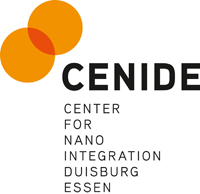Research Project 2
Mass Spectrometric Characterization of Precursor Chemistry and Particle Growth in Flame Reactors
Flame reactors are often used to synthesize nanoparticles of metal oxides because the offer an easily scalable synthesis process. In flame synthesis processes, the precursors decompose in the complex, reacting chemical matrix of the flame gases so that the interaction between flame chemistry and precursor chemistry influences the particle formation. Purposeful changes to the matrix and to the temperature profiles in the flames can be used to drive the synthesis in the desired direction. Consequently, a detailed knowledge of the kinetic reaction steps is a prerequisite for synthesis planning.
The aim of the project TP2 in the research unit FOR 2284 is to develop a detailed understanding of the reactions steps of the precursor destruction and their kinetics, and to identify the intermediates that lead to particle formation. In particular, the initial reactions differ for different precursors and provide an opportunity to influence the synthesis process by selectively producing suited intermediates for the production of the desired nanoparticles. Variation of the flame conditions can identify other controlling factors if the process, e.g. temperatures and radical concentrations.
The gas phase of the synthesis flames is analyzed in detail by mass spectrometric methods. The preceding sampling process is realized by two techniques that differ in sensitivity: conventional molecular beam extraction (MBMS) and the extraction of ionic flames species using a so-called ion interface. The MBMS measurements yield spatially resolved, quantitative species profiles of the intermediates formed by precursor destruction, and of small intermediately formed clusters. The measurements with the ion interface provide qualitative species profiles of those intermediates that are difficult to detect.
By systematic variation of the precursor structure and the flame conditions, the data base of the first project period is extended. This data base is needed to deduct rules for the reactivity of the precursors and for the influence of the flame conditions on the particle formation and summarize them in reliable design rules. The characterization of the synthesis flames for silica particles relies mainly on MBMS measurements with electron ionization and new in the second project period with photoionization. The data are the starting point for the development and validation of kinetic reaction models in the research unit.
Measurements with the ion interface are a good alternative to MBMS for iron containing systems because the sampling nozzle is less prone to clogging. This technique is used to characterize the destruction products of the precursors and identify important intermediates for nanoparticle growth. Initial concepts for quantification of the species profiles obtained with this technique will be optimized in the second project period to support the reaction mechanism development for iron pentacarbonyl and iron acetylacetonate better.
Project management
Prof. Dr. Tina Kasper
University of Duisburg-Essen
Faculty of Engineering
Phone: +49 203 379-1854
E-Mail: tina.kasper@uni-due.de
https://www.uni-due.de/ivg/mrs/



